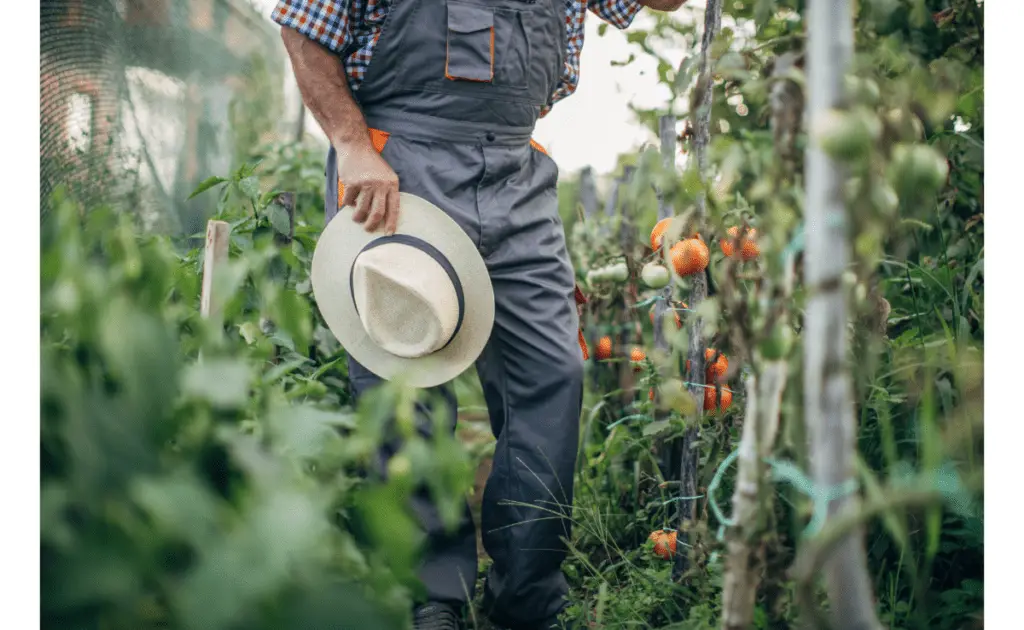
Tomatoes are a popular crop in the garden. They taste delicious, come in many different varieties, and are easy to grow. But where do you start?
Before planting your tomatoes, you’ll need to determine what’s best for your garden. The first step is to choose your tomato plants. You have various choices for this- from heirloom varieties to hybrids. Some are bred for looks, while others are bred for flavor.
So what should you know about growing tomatoes?
Best way to support tomato plants in the garden
One of the most important things to support your tomato plants is staked them. The more leaves are in contact with the ground, the more stress they will endure. So, when staking, be sure to provide plenty of support for your tomato plants. You can use metal stakes or bamboo stakes that you find at your local nursery.
The most common methods of tomato plant support are tomato cages available at any garden or home supply store. If you have the means of transporting them, cattle panels make great supports. Place them long ways in the center of a garden bed for optimal stability.
Wooden stacks about 6 feet in length makes a good option but are more prone to breaking and bending in harsher weather conditions.
Another important thing to do to help your tomato plants is mulching. Mulch acts as a barrier between the plant and the soil underneath it. If you don’t like mulch, then weeds will be able to grow under your plant’s leaves and steal nutrients from them. Mulching also protects against moisture loss by raising the water table around the plant’s roots. This is an easy way to ensure that your tomatoes get enough water throughout the day. Read all about mulching your garden in this article.
The third tip for growing tomatoes is watering them correctly- not too much or too little. Tomatoes should be watered deeply once per week but never left sitting in standing water after watering- this causes root rot! When planting tomatoes, don’t bury them all up to their stems- this will cause water retention problems later on in the summer months. Instead, put just 1 inch of dirt over them so that they can get plenty of air/moisture exchange while still being protected from disease-causing organisms that might come up through the soil.
The fourth tip for growing tomatoes is fertilizing them using organic methods only!
How do I keep bugs off my tomatoes?
The first step to growing tomatoes is choosing the right variety. For tomatoes that grow well in climates with hot, dry summers, try a traditional tomato like Roma or Early Girl that is bred for taste and resists cracking. If you’re planting tomatoes for flavor, try heirloom varieties. These are non-hybridized varieties that have stood the test of time and are well-loved by gardeners and chefs alike.
Heirlooms can typically handle more bug pressure because the bugs have not adapted to the varieties as much as common ones. The most effective way to keep bugs off your tomato’s is to reduce plant stress. This is achieved by watering regular to ensure lack of plant stress and make sure to keep leaves and other parts of the plant from laying on the soil this will cause disease and bug infestation.
If you live where insects pose a problem, don’t worry. There are ways to keep your plants safe without using chemicals. One way is to use insecticidal soap made from natural ingredients like potassium salts and castile soap instead of harsher chemicals like pyrethrum bombs. It’s also important to rotate your plants every year so that pests don’t build up resistance to plants in one area of your garden.
For more tips on keeping bugs from eating your tomatoes, check out this post.
How long do tomatoes take to grow?
The first thing to note is how long it takes tomatoes to grow. This will vary depending on the variety of tomatoes and the weather where you live. The average time for a tomato plant is 60- 75 days with some varieties taking as along as a hundred days.
How often should tomatoes be watered?
Tomatoes should be watered once a day. However, this depends on rain. The best ways to determine how often to water tomatoes is to look at the soil and the tomatoes. Press your finger into the soil about an inch if you feel moisture no watering is needed. Another way to determine watering is to look for cracks in the tomato’s skin, cracks are a good sign of under or over watering.
Do tomatoes need full sun?
Tomatoes require a lot of light to grow properly. Your tomato plants will need at least six hours of sunlight. They also need at least four hours of uninterrupted darkness each night. This can be difficult if you live in an area with interrupted daylight hours.
If you don’t have enough sun, consider planting tomatoes near a south-facing wall or fence to maximize your available light. You can also supplement your sunlight with artificial lights like fluorescent bulbs. If you do this, make sure that the lights are close to the tomato plants and that they’re not too hot for them to touch.
How deep should a raised garden bed be for tomatoes?
A garden bed should be at least 12 inches deep for tomatoes. Its important to plant tomato plants deep enough for stability and root development. Tomato plants will root along their stems where they come into contact with soil. You want to bury a tomato start up to the top leaf set. Make sure the leaf’s do not touch the soil however as this leads to disease and bug problems.
Growing tomatoes in your garden can be a great way to get fresh vegetables in the summer. But there are some things you’ll need to do to ensure they thrive in your garden. There are many benefits to growing tomatoes, including better flavor, improved nutrition, and the ability to grow them in containers. Here are some tips for gardening success.
-Choose an area with full sun
-Raised garden beds are best for tomatoes Learn more about raised garden beds here.
-Tomatoes need regular watering
-Tomatoes need to be supported in the garden
-Tomatoes need to be fertilized
-Tomatoes need to be protected from bugs
How to make tomato stems grow faster?
Tomato growing can be increased with a few tricks.
- Start tomatoes indoors 6 weeks ahead of outdoor planting
- Choose tomato varieties that grow fast. Plants grow at different rates bush-type plants take longer to grow than than vine style plant tomatoes.
- Use nutrient rich potting soil.
- Add fertilizer once tomato starts growing phase.
- Pick tomatoes often to trick plant into producing more tomatoes.
How to grow tomatoes in pots this season
To grow tomatoes in pots this season follow these simple steps.
- Start tomato seeds 6 weeks before your growing season.
- As tomato grows add soil up stem to encourage roots to grow. Roots will develop where stems meet soil.
- Trim leaves off lower stems to keep from touching soil.
- Once growing season starts transplant tomato into pots and add support.
Tomato growing, watering, mulch and harvest
Mulch is great to help keep soil watered. Mulch protects the tomatoes roots and stem. Animals will nibble on the stem of tomatoes. Wind can also break the stem without support. The most important thing mulch does is keeping soil off tomato leaves and tomato fruits.
Tomatoes need a constant water supply, You want to want at ground level to avoid soil splash on leaves. mulch can help avoid this as well. Ground soil can lead to mildew on stems and leaves.
Growing should be started indoors in most zones to get long harvest. Tomato growing can be touchy to get a full harvest when growing from seed.
Harvest season will start around the end of June to early July in most zones. By starting the season early indoors you can see harvest as early as the start of may depending on variety planted. Indeterminate tomatoes will grow all season to keep production going.
This post contains affiliate links. If you make a purchase through these links, we may receive compensation at no additional cost to you.
